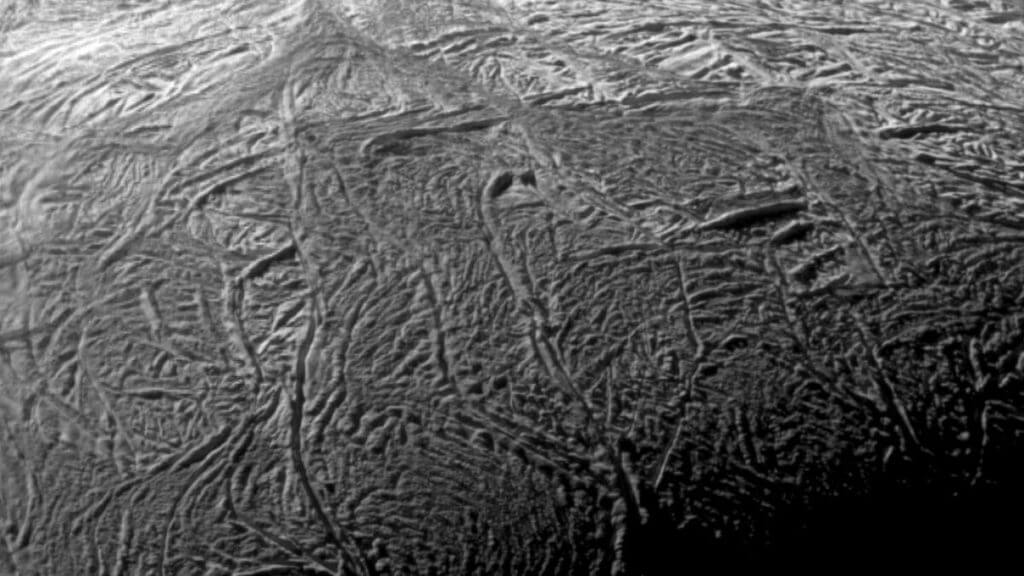
How scientists might find life on a moon of Saturn while skipping the hardest part (Image Credit: Mashable)
Researchers believe they may be able to suss out whether microscopic aliens exist on one of Saturn’s 83 moons without having to land a spaceship there.
Enceladus — about 800 million miles away and 25 times smaller than Earth — has captured the imaginations of planetary scientists searching for life beyond the blue marble. The Saturn moon shoots geyser-like plumes containing bits of water and gas from its ocean into space. That constant spray creates a halo, which contributes to one of Saturn’s rings.
Scientists have pushed NASA to endorse future missions to explore the world, requesting financial support to land on its surface. One such proposal, the Enceladus Orbilander designed by Johns Hopkins Applied Physics Laboratory in Maryland, would study it from the moon’s ground — as well as from space — over a 1.5-year period beginning in the 2050s. The complex mission would cost an estimated $2.5 billion, according to The Planetary Society, a nonprofit focused on advancing space science.
Now a research group led from the University of Arizona has laid out a proposal for an approach that’s relatively simple, suggesting that all scientists would need to determine whether microbes live under Enceladus’ icy shell is an orbiting space probe. The study was published in The Planetary Science Journal this December.
“Our research shows that if a biosphere is present in Enceladus’ ocean, signs of its existence could be picked up in plume material without the need to land or drill,” said Antonin Affholder, the lead author, in a statement, “but such a mission would require an orbiter to fly through the plume multiple times to collect lots of oceanic material.”

Credit: NASA / JPL / Space Science Institute
Just how many times? Perhaps over 100 flybys, according to the paper.
To discover the presence of alien life, the research team has turned the problem on its head: Rather than trying to answer how much organic material would have to be found to prove that life is there, they are focusing on the maximum amount of organic material that could be present without life.
When Enceladus was first studied in 1980 by NASA’s Voyager 1 probe, it didn’t appear as much more than a little snowball. More recently, researchers have learned that the moon’s thick layer of ice conceals a warm saltwater ocean, spewing methane, a gas that usually comes from bacteria and other microorganisms on Earth. Between 2005 and 2017, NASA’s crewless Cassini spacecraft flew through Saturn’s rings and moons, revealing an abundance of new information.
Last year a collaboration between the University of Arizona and Université Paris Sciences et Lettres in Paris calculated that microbial life forms on Enceladus could be what’s causing the moon to burp methane.
Want more science and tech news delivered straight to your inbox? Sign up for Mashable’s Top Stories newsletter today.

Credit: NASA / JPL-Caltech / Space Science Institute
“signs of its existence could be picked up in plume material without the need to land or drill.”
The possibility that actual cells would be detected might be slim, because they would have to survive the journey of ejection from deep within an ocean into the vacuum of space. The team of scientists say organic molecules, such as certain amino acids, would serve instead as evidence to support or rule out habitation.
If measurements came back above a certain threshold, it would make a strong case that microbes live on Enceladus.
But, Affholder said: “The definitive evidence of living cells caught on an alien world may remain elusive for generations.”





